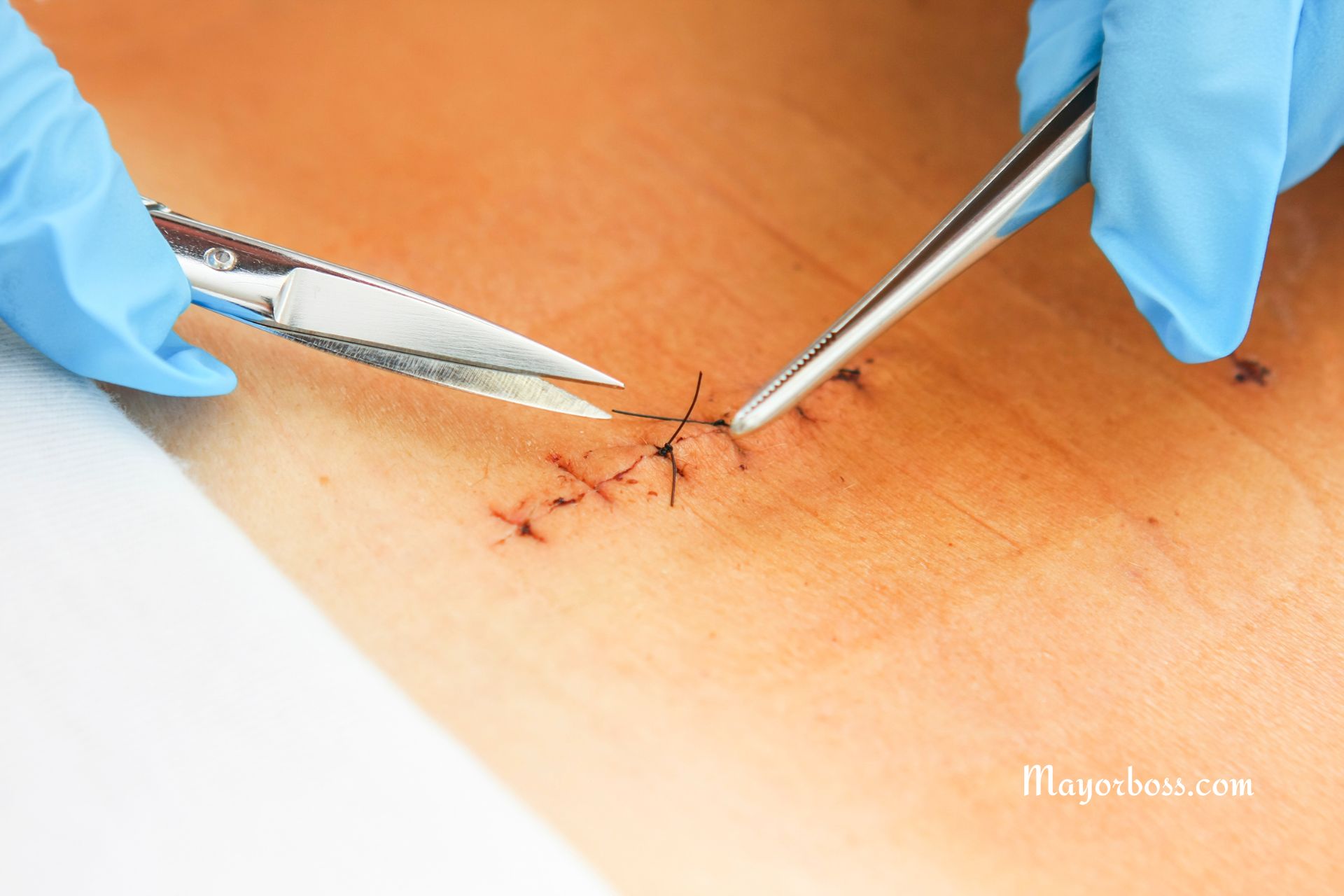How Long Does It Take for Stitches to Dissolve?
Stitches are a common way to close wounds after an injury or surgery. While some stitches need to be removed by a doctor, others are designed to dissolve on their own. These are called dissolvable or absorbable sutures. If you’ve recently had stitches, you’re likely wondering how long it takes for them to disappear. Let’s explore this in detail.

What are Dissolvable Stitches?
Dissolvable stitches are made from materials that are gradually broken down and absorbed by the body. This eliminates the need for a follow-up appointment to remove them. Common materials used for dissolvable stitches include:
- Polyglycolic acid (PGA): A strong synthetic material that usually dissolves within a couple of weeks.
- Polylactic acid (PLA): Another synthetic material with a slightly longer absorption time.
- Polydioxanone (PDS): This synthetic material breaks down slowly and is often used for deeper wounds, and it can take months to dissolve.
- Gut sutures: Made from natural animal tissue, these may dissolve more quickly, though they’re less commonly used than synthetics.
Factors Affecting the Time It Takes for Stitches to Dissolve
The time it takes for dissolvable stitches to disappear completely can vary depending on several factors:
- Type of suture material: As mentioned, some materials dissolve faster than others.
- Location of the wound: Stitches in areas with good blood flow may dissolve faster than those in areas with reduced circulation.
- Size and depth of the wound: Deeper or larger wounds may require stitches that take longer to dissolve.
- Your overall health: Age, nutritional status, and medical conditions can all influence your body’s healing process and stitch absorption rate.
Typical Timelines for Dissolving Stitches
Here’s a general guide to how long different types of dissolvable stitches typically take to dissolve:
- Gut sutures: May dissolve in as little as 7 days.
- PGA sutures: Usually dissolve within 2 to 3 weeks.
- PLA sutures: May take a few weeks to a month to dissolve.
- PDS sutures: Often take up to 6 months to fully dissolve.
It’s important to note that everyone heals differently, so these are just general timelines.
Caring for Dissolving Stitches
Caring for your dissolving stitches properly is essential for optimal healing:
- Keep the wound clean and dry: Follow your doctor’s instructions for cleaning the wound.
- Avoid picking or scratching at the stitches: This can increase the risk of infection and scarring.
- Limit strenuous activity: Avoid activities that might put pressure on the stitches.
- Watch for signs of infection: This could include redness, swelling, increased pain, or discharge from the wound.
Frequently Asked Questions (FAQs)
1. When will I see my stitches dissolve?
Most dissolvable stitches begin to break down within a week or two, although some may take longer. You might notice small pieces of the stitches falling out or see them disappear entirely beneath the skin.
2. Is it normal to feel discomfort or itching around dissolving stitches?
Mild discomfort or itching around the stitches is common as your body breaks down the suture material. If discomfort is severe or accompanied by signs of infection, contact your doctor.
3. Can I speed up the dissolution of my stitches?
No, there’s nothing you can do to speed up the process. Trying to remove dissolving stitches yourself could lead to complications. Be patient and let your body heal. If you have any concerns, talk to your doctor.
Conclusion
Understanding dissolvable stitches, including typical timelines and how to care for them, promotes proper wound healing. Rest assured, your body will gradually absorb most dissolvable stitches without intervention. However, if you’re concerned about the length of time it’s taking or are experiencing signs of complications, don’t hesitate to consult your healthcare provider.
